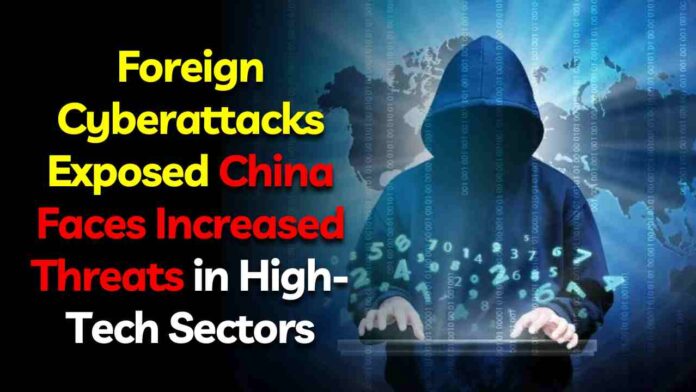In a recent report by Chinese cybersecurity company 360, it was revealed that overseas organizations intensified cyberattacks on China’s high-tech microchip and 5G sectors in 2023. The report suggests a connection to the United States’ policy aiming to impede China’s technological progress. This article will delve into the key findings of the report, shedding light on the rising cyber threats faced by China.
1. Increased Attacks on Microchip and 5G Sectors:
- Targeted Sectors: China’s high-tech microchip and 5G sectors experienced a significant surge in cyberattacks in 2023. The report identifies political motives behind these attacks, aimed at suppressing China’s technological development.
- US Involvement: The report specifically points out the US Central Intelligence Agency as one of the attackers involved in the increased number of cyber assaults on China’s critical technological infrastructure.
2. Political Forces Behind Cyberattacks:

- Clear Intentions: The cyberattacks on China are driven by political forces with a clear intention to hinder the country’s technological progress. Cybersecurity expert Bian Liang emphasizes the need to uncover the political motivations behind such attacks.
- Global Implications: The report highlights the global nature of these cyber threats, indicating a broader geopolitical dimension in the realm of cybersecurity.
3. Cybersecurity Concerns for Chinese Institutions:
- Increased Attacks on Chinese Entities: The number of cyberattacks on overseas Chinese institutions and enterprises also saw a significant rise in 2023. The report emphasizes the importance of addressing cybersecurity concerns in these entities holding key information on government policy and trade data.
- Geological Surveying and Mapping Data: There is a notable increase in cyberattacks targeting geological surveying and mapping data in China. This data, if compromised, can be strategically exploited by political forces.
4. Focus on Education and Scientific Research Sectors:

- Key Battlefields: Over 50% of detected attacks in 2023 were directed at the education and scientific research sectors. These sectors have become crucial battlegrounds for China in its efforts to combat cyber threats.
- Precision Attacks: Cyber attackers have gone to the extent of using stolen documents and contact information to launch precise attacks on their targets within the education and scientific research sectors.
5. Global APT Activities:
- Global APT Threat Level: The report emphasizes that global advanced persistent threat (APT) activities remain at a severe level. The primary sources of APT organizations include countries like the US and India, with the US posing the main threat to global cybersecurity.
- US Dominance: The US dominates the global landscape with the highest number of APT organizations and the most advanced attack capabilities.
6. Increasingly Diversified Ransomware Attacks:
- Targeted Industries: The report notes that targeted ransomware attacks became more diversified in 2023, with a growing number of attacks on the aerospace industry.
- Warning for Aerospace Industry: China’s rapidly developing aerospace industry, especially in civilian drones and space exploration, faces an escalating threat. The article emphasizes the need for relevant departments and companies to strengthen prevention measures.
#foreigncyberattacks pic.twitter.com/ZfkyrxxaKH
— NewsPlus Today (@NewsplusToday2) February 1, 2024
As China confronts a surge in cyber threats targeting its high-tech sectors, the 360 report underscores the geopolitical undercurrents influencing these attacks. The global cybersecurity landscape, dominated by powerful players like the US, raises concerns about the need for enhanced cybersecurity measures to protect critical assets and data. The evolving nature of cyber threats demands continuous vigilance and proactive strategies to safeguard technological advancements and national interests.
Also Read – Donald Trump’s Legal Battle Takes a New Turn as Contempt Charges Loom

